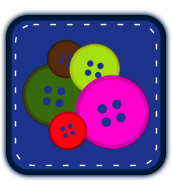Good things can come from bad experiences
I received an email from the PhD student whose Bullying Study I participated in. The email was very nice, thanking me for my participation and providing me with a copy of her dissertation. She asked how I was and if things were going well. What you would expect, really.
I was totally caught off guard by my reaction. I almost started crying. Seeing the work she put into using our stories to understand and discuss what happens in women on women bullying. Not the amount of work, which after reading a majority of the dissertation was impressive (as dissertations should be), but that something was coming out of my experience, something besides my own recovery and self revelations.
You can tell your friends about horrible experiences you have, and they can hear you and be there for you and try to help as best they can. So rarely (and through no fault of theirs) do your friends go and attempt to make a major change in the world because of an experience you had. Most people try to change the world based on their own experiences, and I think that’s how things should be.
But here I did what I felt I could do. I told someone about what I experienced, hoping it might help in some way. I don’t feel like I could ever go and perform such a study myself. I’m still having issues letting go and I definitely haven’t forgiven my former boss yet. I don’t know when that will happen, but I know the sooner it does the sooner I can let go of everything that happened back then.
Here I was, staring at the computer screen, getting emotional because I was seeing my experience come to life. My experiences being…utilized, meaning something besides pain and anger. Just another step in recovery I guess.
Was this vindication? No, but it did somewhat satisfy my rage.
I’m hoping to get permission to post a copy of the dissertation to my blog, but until then I’ll just be referencing it. When and if I get a chance to post it I’ll probably talk a little about what the results were and what they mean to me.



 2012 FlamingLunchbox unless otherwise noted.
2012 FlamingLunchbox unless otherwise noted.